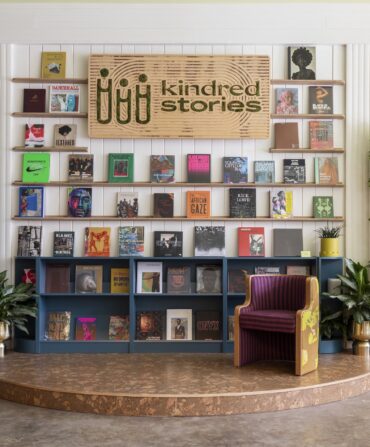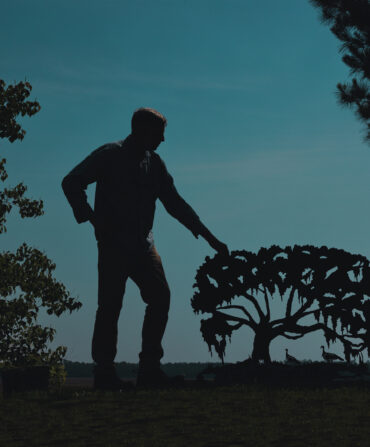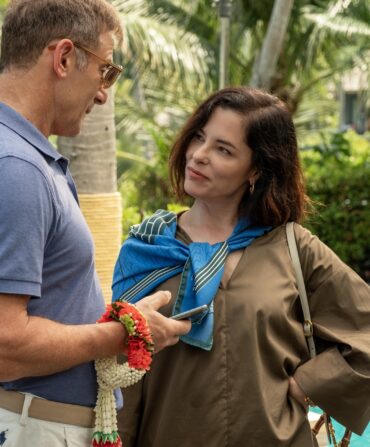G&G Presents
Introducing the Winners of the 16th Annual Made in the South Awards
Kaleidoscopic glass dinnerware, heritage-inspired button-downs, and this year’s other Southern-crafted honorees embody thoughtful design and innovative techniques worthy of passing down to the next generation
Overall and Home Winner: Still Johnson x Pearl River Glass Studio
Dinnerware
Made in: Jackson, Mississippi | $75–$95 per plate; stilljohnson.com
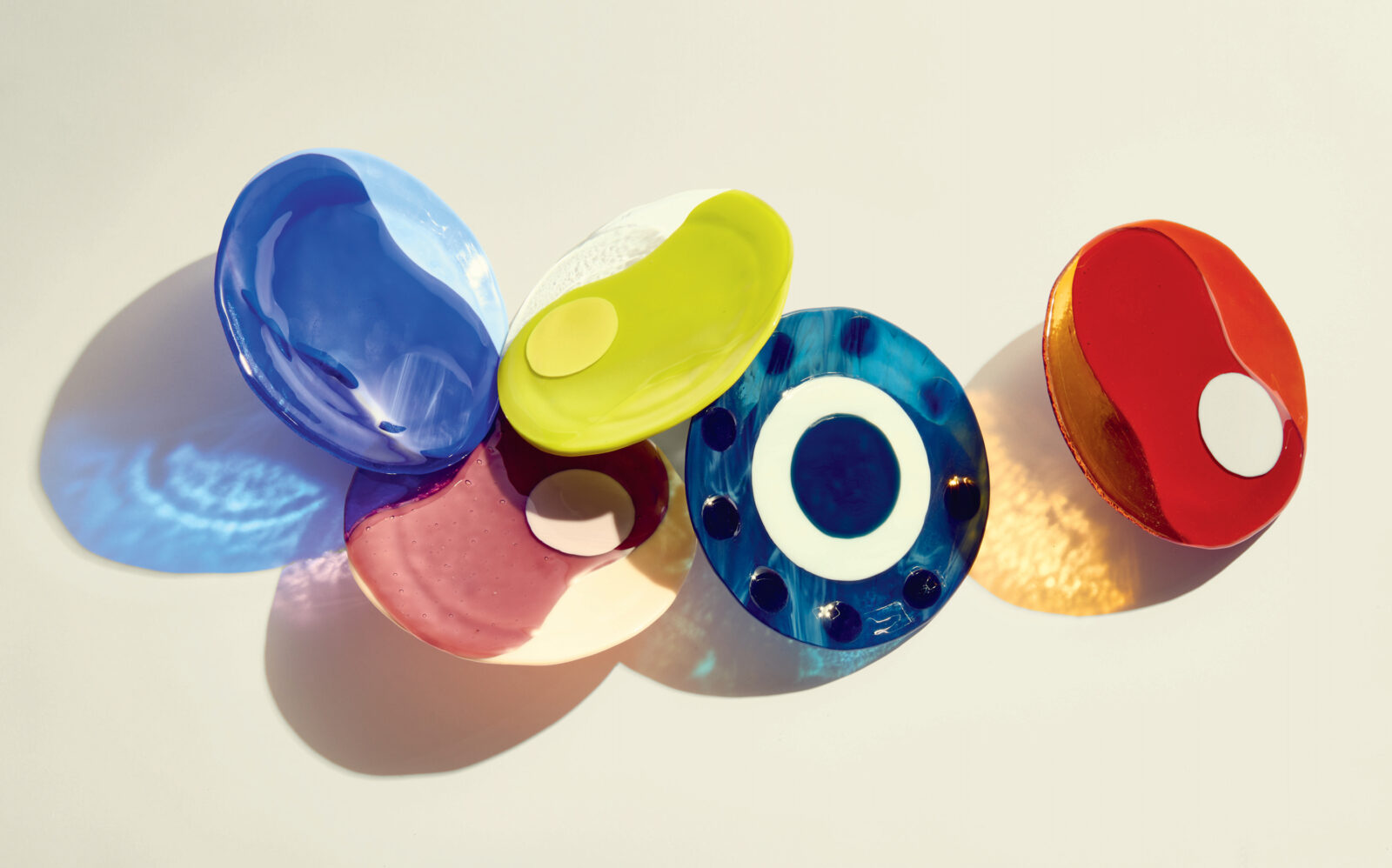
Photo: Fredrik Brodén
Birmingham interior designers and an acclaimed Mississippi glass studio concoct colorful custom dinnerware
By Elizabeth Hutchison Hicklin
Inside Still Johnson, the layered, eclectic shop founded by Marguerite Johnson and Anna Still in the space fronting their Birmingham interior design studio, glass plates in bright poppy, dusty rose, and luminous amber sparkle in the sunlight. Nearby, earthy whorls of rich forest green and vivid moss electrified by a brilliant pop of chartreuse catch both errant rays and the eyes of passersby. “I walk by the plates every single day, and they grab me each time,” Johnson says of the Technicolor collection of kiln-formed dinnerware she and Still create with the famed Pearl River Glass Studio in Jackson, Mississippi.
Pearl River, founded in 1975 and one of the largest stained-glass workshops in the Southeast, has in recent years rendered civil rights icons for the windows of Memphis’s Clayborn Temple before it burned down last spring, and restored more than seventy stained-glass windows at the Mississippi State Capitol. But Johnson, a Jackson native, was more familiar with Pearl River’s kiln-formed glass platters, which filled the homes of her childhood family friends. When she and Still began stocking their boutique with the wares of acclaimed regional artisans, she knew she wanted Pearl River in the mix. But instead of simply putting a box on the next Birmingham-bound delivery truck, the Pearl River team invited Johnson to visit their six-building campus for a tour, even putting her in the studio to make her own platter.
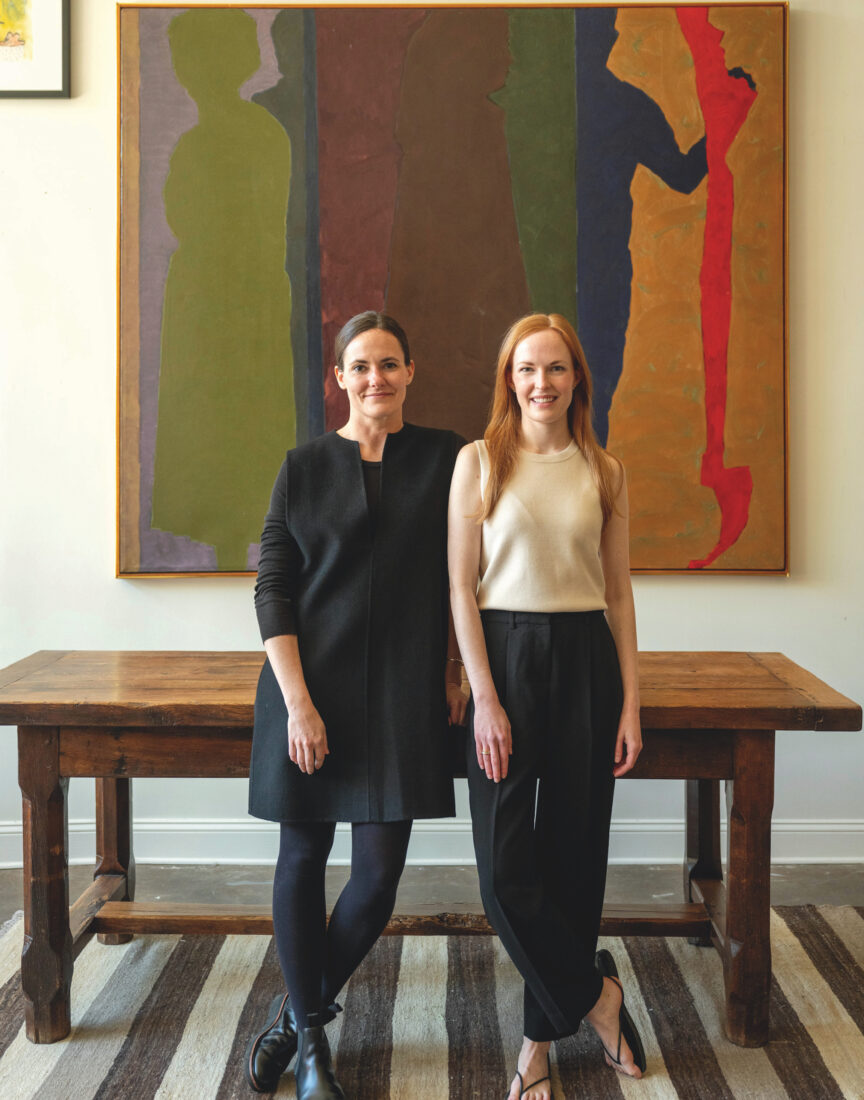
Photo: C. W. Newell
Anna Still (left) and Marguerite Johnson worked with Pearl River Glass Studio in Jackson, Mississippi, to create this year’s winning plates.
“Being here and being part of the process is really the best way to grasp the craft,” says Melissa Gentry, Pearl River’s marketing manager. Herself a trained glass artist, Gentry and Pearl River founder Andrew Cary Young walked Johnson through making kiln-formed (or fused) glass, a technique that gained popularity in the sixties and seventies. “Fused glass is considered ‘warm glass,’ because when the artist is working with it, it’s room temperature and solid,” Gentry explains. “Sheets of glass are cut, layered, and then fired in a kiln just like you would with ceramics.” Once the kiln cools, the artist removes the now-solid piece of flat glass, which is then cleaned and refired until the glass warms enough to “slump” into a final hand-formed mold.
One of Pearl River’s most iconic kiln-formed designs, the Classic Egg Plate—a funky, abstract depiction of a fried egg that Young dreamed up while preparing breakfast for his children—ultimately sparked the collaboration between Pearl River and Still Johnson. “We’re always drawn to things that are graphic and bold,” Still says. “The glass plates we had seen in the past were always soft colors, but these were so vibrant and cool.” She proposed modifying the Egg Plate’s original yellow-and-white composition with a rainbow of colors. She and Johnson dubbed the result the Modern Egg, and the idea eventually expanded into a custom line of salad and dinner plates in both solids and original Still Johnson patterns featuring the likes of bamboo and dots. There’s also a cake plate in the works.
With seventy-two color and finish options (different glass types yield opaque, transparent, or wispy looks), the customization possibilities are nearly endless. “In the beginning we were spending too much time trying to find the perfect color combinations; eventually we realized everything works,” says Still, who encourages customers to embrace that whimsy when choosing plates for their own collections. “You can truly pick up any dinner plate and put it with any salad plate.”
Home Runner-Up: Evolve Lighting Company
Light Fixtures
Athens, Georgia | From $400; evolvelightingco.com
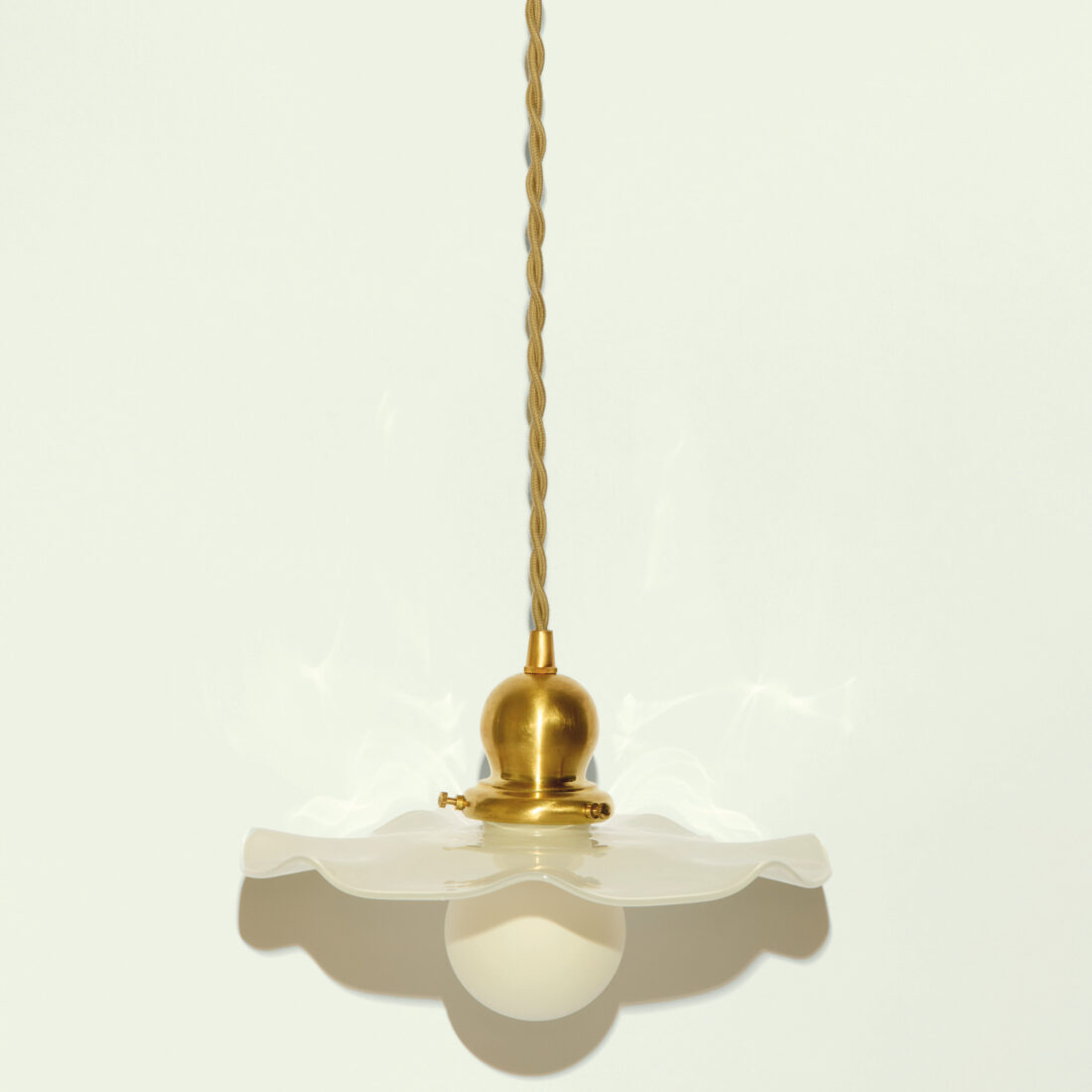
Photo: Fredrik Brodén
Whether brightening a reading nook or illuminating a home bar, the sconces, pendants, and chandeliers handcrafted by the small team at Evolve Lighting Company add instant character. Interior designer Monica Stewart and metalsmith Mike Harboldt cofounded the Athens, Georgia, studio in 2021 after an initial collaboration on a pair of sconces yielded fertile creative ground for both of them. They christened their new enterprise Evolve to reflect their commitment to materials like brass and bronze with living finishes that gain patina over time. “Our lights have texture and depth,” Harboldt says. “They just get prettier with age.” The company’s portfolio has also grown organically as the team finesses new designs born out of Stewart’s interior projects for a broader market. “There’s a lot of drawing on napkins,” Stewart says. The addition of North Carolina–made shades in both fabric and hand-blown glass allows clients to customize the bulk of the designs.
Home Runner-Up: Kathy Slater Design Collection
Coffee Tables
New Orleans, Louisiana | From $1,200; kathyslater.com

Photo: Fredrik Brodén
A handsome baluster at a local ironworks shop, decorated with delicate fluting and an acanthus leaf motif, prompted longtime New Orleans interior designer and antiques dealer Kathy Slater to sketch and commission her first coffee table in 2011, a counter to the sameness she’d noticed in the market. “I put the table in a design showcase, and it sold,” Slater says. “All of a sudden, I was in business”—one that has since earned her such fans as football matriarch Olivia Manning. That original Audubon table is still one of her bestsellers, but the collection now includes more than a dozen other customizable iron- and wood-framed versions, each of which can be fabricated as an end, coffee, or console table and topped with hand-finished limestone, glass, wood, or concrete. Often incorporating elements of furniture antiquity such as medallions or hoof feet, the classic styles are made-to-order by a crackerjack team of local craftspeople, including a welder, a woodworker, and two faux-finish artists.
Home Runner-Up: Smithey Ironware Company
Double Burner Griddle
North Charleston, South Carolina | $295; smithey.com
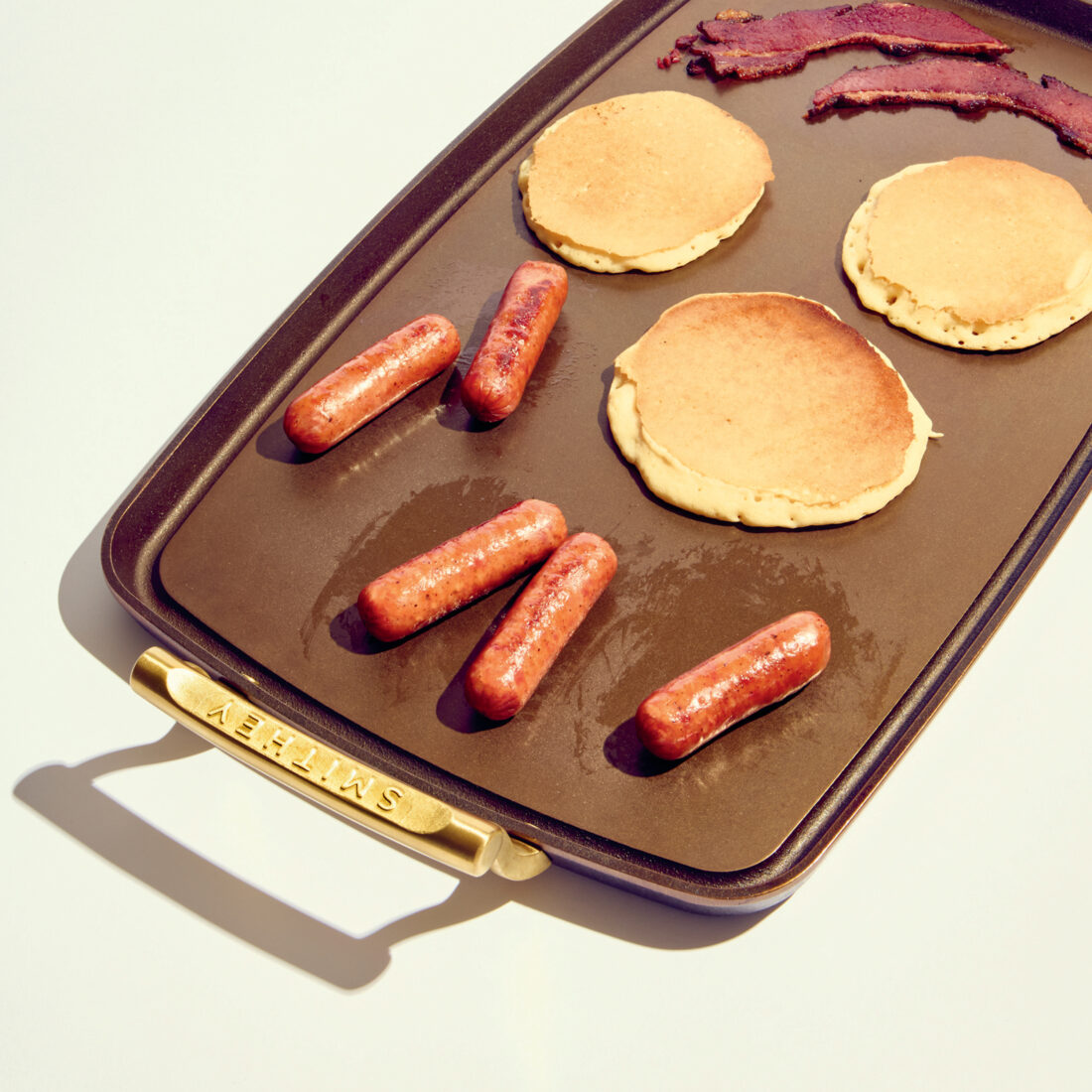
Photo: Fredrik Brodén
Inspired by a vintage Griswold skillet that his sister-in-law gave him, Smithey Ironware Company founder Isaac Morton began restoring rusty cast-iron relics in his garage and doling them out to friends. “I realized there was a market for cast-iron cookware that not only honored the vintage pieces I loved but also harnessed modern technology,” Morton says. He launched the company in 2015 with a single satin-smooth, Charleston-made skillet, cementing Smithey’s reputation for turning out updated heirlooms and earning kudos from such discerning chefs as Mike Lata and Vivian Howard. But it took several more years of research and development before the team landed on the perfect double burner griddle. They tweaked the size to ensure the new griddle fit most American stovetops and added smart details like a narrow drip canal around the edge and hand-riveted gold stainless-steel handles, turning a workhorse into a showpiece—pancake mornings and hibachi nights never looked so good.
Meet the Home Judge: Elizabeth Lawrence
New York, New York

Illustration: Jaya Nicely
As Bunny Williams’s partner at the lauded firm Williams Lawrence, Elizabeth Lawrence has garnered years of expertise in interior design, which she channeled while looking for Home products with thoughtful form and function, a combination she found in the winning plates by Still Johnson x Pearl River Glass Studio. “I would love to use these for a dinner party and mix them with my vintage china and glassware,” she says. “Everyone would want to know more about them.”
Style Winner: Kennedy Gray
Men’s Shirts
Made in: Houston, Texas | From $128; kennedygray.com
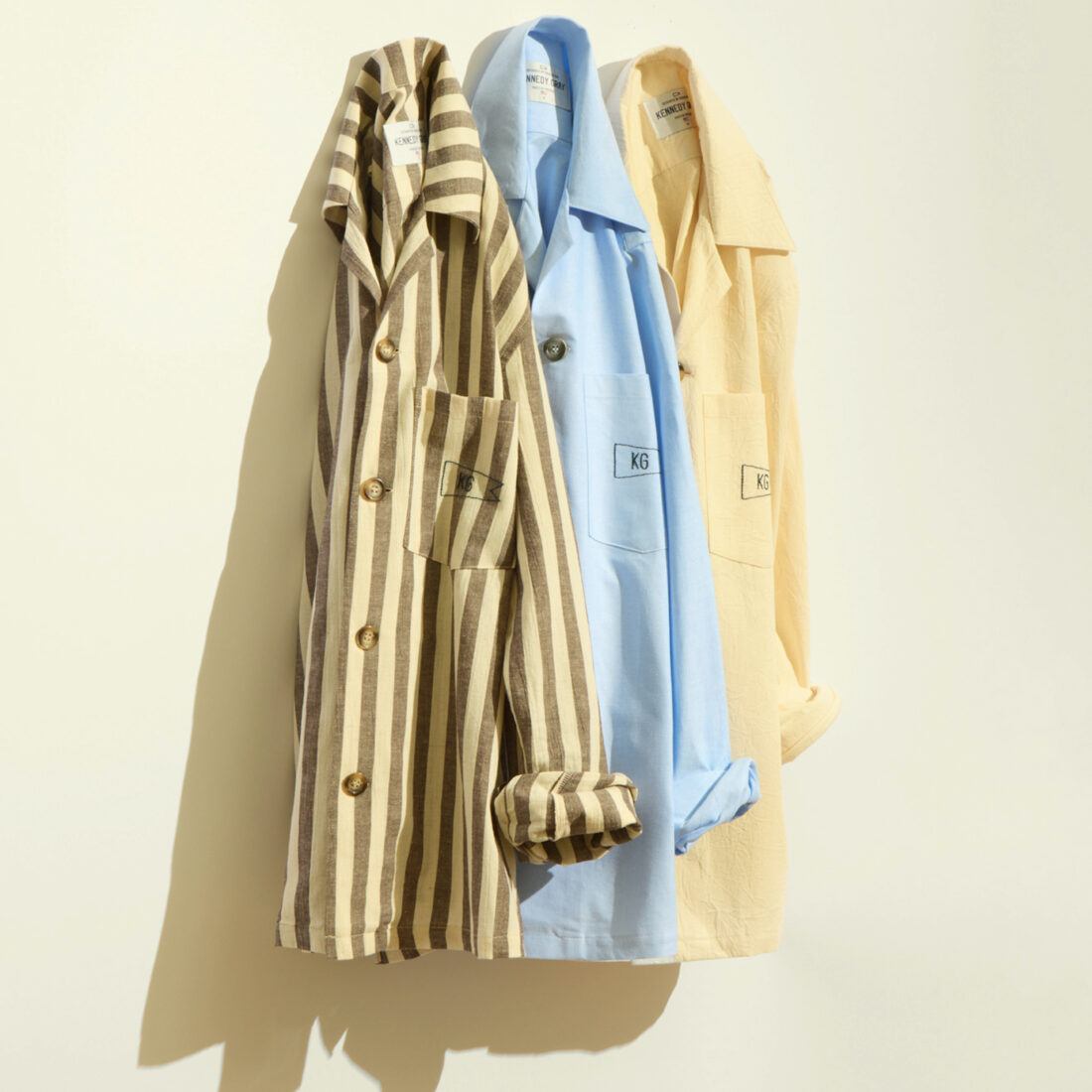
Photo: Fredrik Brodén
Retro meets refined in a shirt line rooted in family tradition
By Elizabeth Hutchison Hicklin
Although Kevin Tillis snagged “best dressed” honors in both the eighth and twelfth grades, he lacked the real-world chops needed to secure a New York fashion gig after college. “I was about to start a safe, corporate job, but I knew design was something I felt called to do,” he says. “I just had no idea how to take that first step.” Instead, he went to work for Peter Millar and Miller Brothers, a high-end Atlanta clothier. With that experience under his belt, in 2018 Tillis launched Kennedy Gray, a menswear brand based in Charleston, South Carolina, with a vintage nautical prep aesthetic that draws on childhood summers spent at Graymont Cottage, his family’s 1927 vacation home on Georgia’s Lake Rabun. “Growing up, I was fascinated by my great-grandfathers and their classically cool outfits,” he says. That retro influence particularly emerges in the Graymont Collection, a new line of shirts that reimagines the oxford button-down with a more relaxed fit and the throwback camp collars his forebears sported in the black-and-white home movies Tillis pored over for inspiration. And although the shirts are made using premium natural fiber fabrics from Japan and sustainable horn buttons from Italy, they’re also the first Kennedy Gray silhouette entirely cut and sewn in the South—in a small factory in Houston— the culmination of a three-year deep dive into American manufacturing. “This was a prove-it project for me,” Tillis says, “and a step in the direction I want to take Kennedy Gray.”
Style Runner-Up: Susan Shaw
China Cabinet Collection
San Antonio, Texas | From $98; susanshaw.com

Photo: Fredrik Brodén
When Susan Shaw handcrafted a chile pepper necklace for San Antonio’s 1979 Fiesta celebration, it ignited more than four decades of creative jewelry design and formed the foundation for an enduring Texas-made brand. Today each Susan Shaw necklace, bracelet, ring, and earring—including the pieces in one of her latest lines, the China Cabinet Collection—gets made to order; Shaw creates a lost-wax mold before a team of Texas artisans hand casts and triple plates each piece in twenty-four-karat gold or sterling silver. Reflecting both Shaw’s interior design background and the quintessentially Southern tradition of collecting fine dinnerware, the four intricate pendant designs in her line pull from the dishes and patterns inside her own china cabinet—Blue Willow, Tobacco Leaf, Cabbageware, and oyster plates. “There was a lot of sketching involved,” Shaw says of the finely detailed medallions. “I wanted to make sure each design included enough parts of the plate so collectors would immediately recognize the style.”
Style Runner-Up: Moore & Giles
Seven Hills Benny Duffel
Lynchburg, Virginia | $1,860; mooreandgiles.com
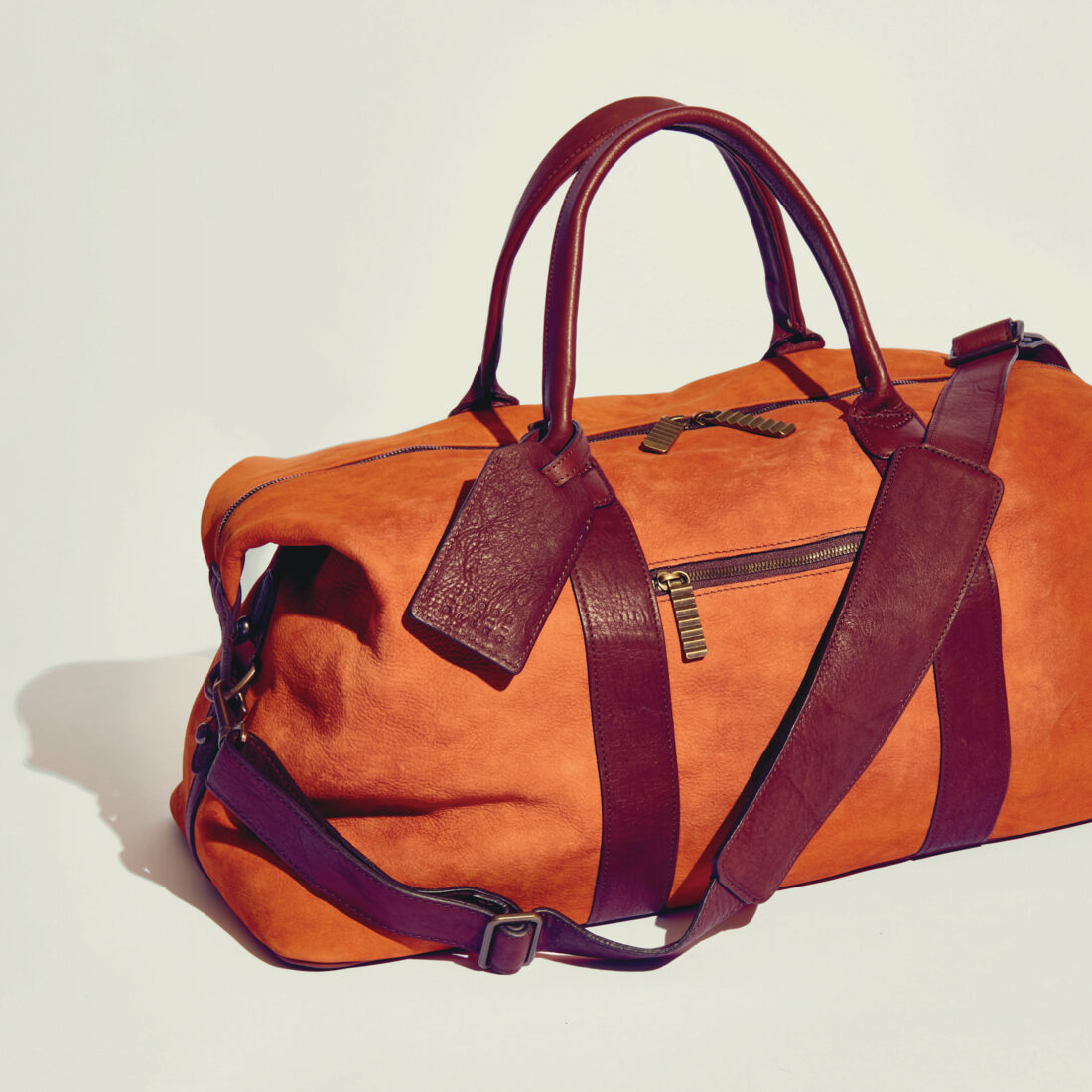
Photo: Fredrik Brodén
Since 1933, Moore & Giles has honed a global reputation for crafting sustainable, luxury leather goods intended to be family heirlooms just as much as an antique table or diamond bracelet. With a tailored silhouette, expandable sides, smart interior organization, solid brass hardware, and a quick-access exterior pocket, the handsome Benny Duffel—a reimagination of the beloved Benedict Weekend Bag and the cornerstone of the company’s new Seven Hills Collection—is a celebration of American craft. “We asked ourselves, what if we wanted to keep every aspect of this bag close to home? What would that look like?” says Thomas Brennan, the company’s senior director of design. The answer came courtesy of the raw materials, namely Virginia hides. Transformed by renowned U.S. tanneries, the natural leather gets stitched together in Florida, where it’s lined and finished with an elegant, North Carolina–woven herringbone fabric. The resulting weekender is an instant classic, equally at home in an overhead bin or a hunting cabin.
Style Runner-Up: Glen & Effie
Fine Jewelry
Nashville, Tennessee | From $635; glenandeffie.com
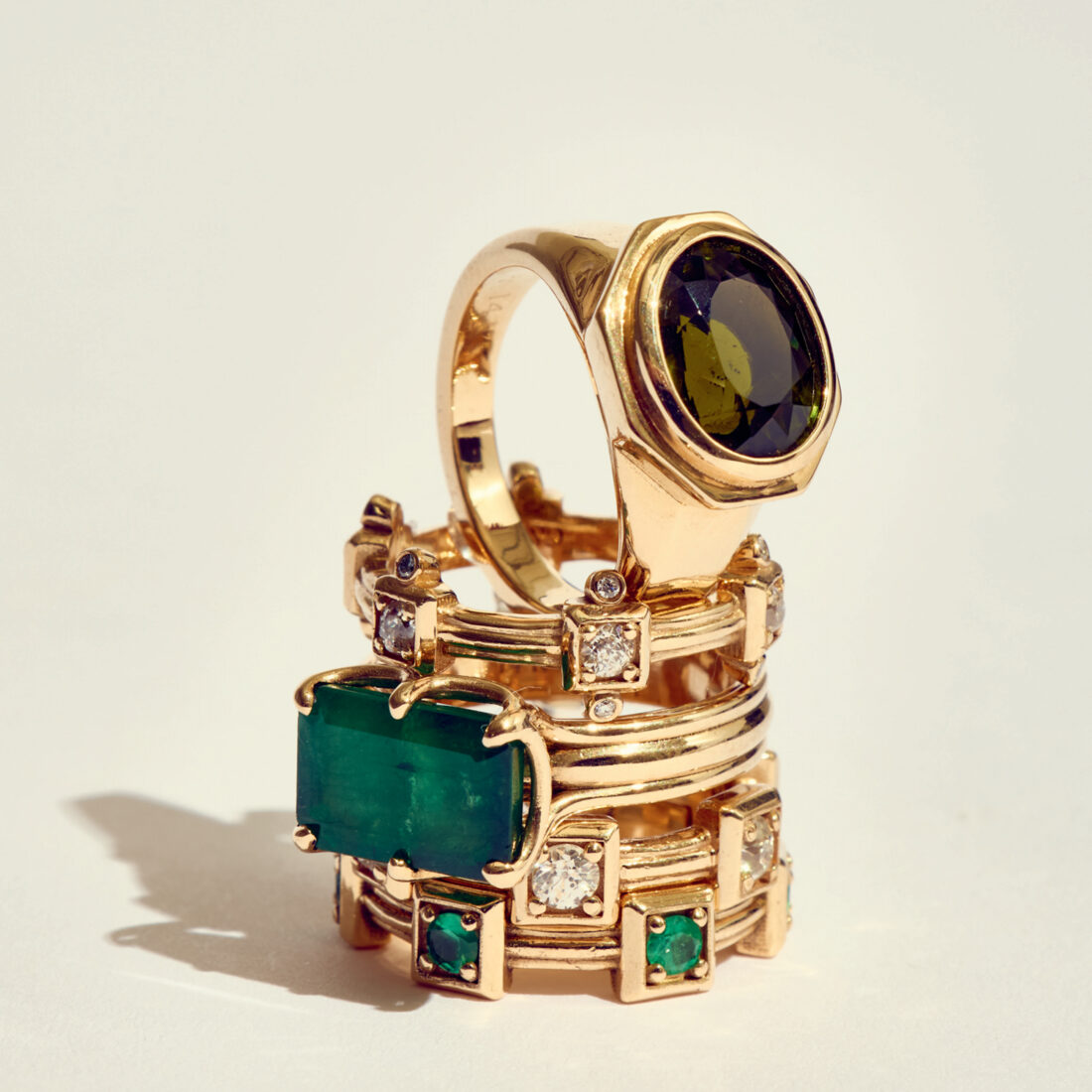
Photo: Fredrik Brodén
From soldering fishing lures with her dad as a child to setting rare, old-mine-cut diamonds today, Brooke Griffith’s journey to jewelry designer is a distinctly Southern one. Griffith founded Glen & Effie while studying for her BFA at Belmont University in Nashville and built her business reworking clients’ dated family heirlooms into modern treasures. This fall she released her first original fine-jewelry line. “This collection feels like a natural next step, creating something beautiful and timeless and truly us,” Griffith says. Rooted in Roman design, the thirty-eight inaugural pieces, including architectural bands, cocktail rings, and pendants worn as earrings or necklaces, channel the elegance of historic forms through a contemporary lens. The result of collaboration between her Nashville design team, a Kentucky casting house, and a North Carolina master jeweler who undertakes the trickiest settings, the statement pieces feature, when possible, reclaimed gemstones prized for their rarity, beauty, and minimal environmental impact.
Meet the Style Judge: Christy Lynn Lee
Houston, Texas

Illustration: Jaya Nicely
Fashion designer Christy Lynn Lee earned her stripes in New York before moving to Houston and introducing her celebrated eponymous clothing line in 2020. When looking at this year’s entries, Lee appreciated every small detail of the winning Kennedy Gray shirts. “In our industry today, it’s so important to offer consumers pieces that are both timeless and distinctive,” she says. “I could tell this product was going to keep customers coming back for more.”
Outdoors Winner: Keown Fine Folders
Folding Pocketknife
Made in: Westminster, South Carolina | From $2,300; keownfinefolders.com
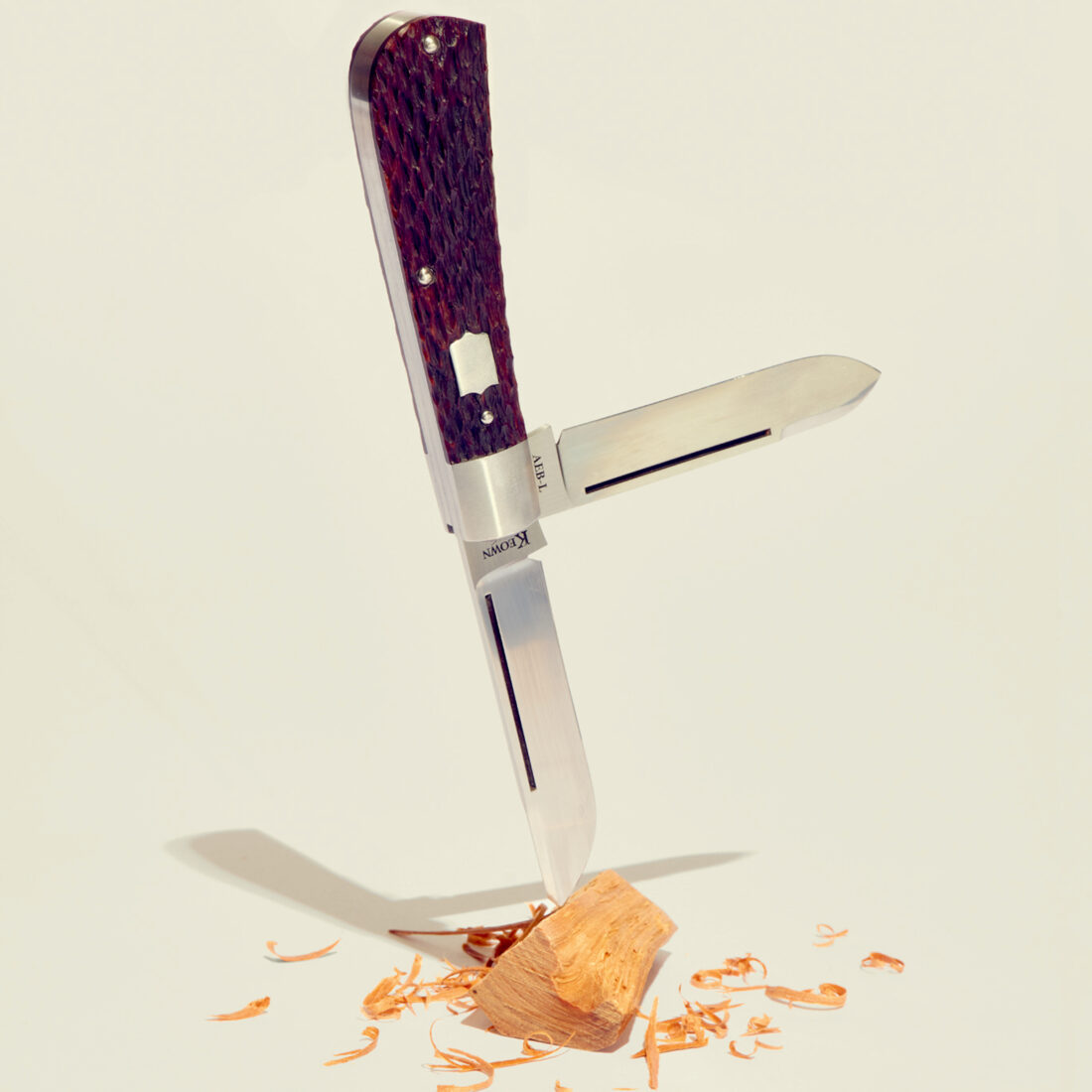
Photo: Fredrik Brodén
An old-school-style folding knife gets an artisanal revamp
By T. Edward Nickens
Pocketknives are a bear to make by hand—perhaps that’s why so few do it anymore. But a well-made, fetching folding knife, such as Daniel Keown’s two-bladed Trapper-style version, invites both hard use and admiration. Keown came to the world of knife making from a lifelong interest in wood carving, initially sparked at a Mennonite wilderness camp he attended as a kid. While working as a pipe welder in the oil and gas industry, he threw himself into custom knife making with sharp focus, and now hand produces fine Trappers, Damascus steel folders, and Swiss Army–like multitools in his South Carolina workshop.
American trappers and cowboys long favored the Trapper for its blunt-tipped spey blade, good for skinning animals while avoiding nicking other organs. Early twentieth-century hunters, anglers, campers, and hikers loved the design, and legacy brands such as Old Timer and Case crafted untold numbers of them. Many of those traditional Trappers were, and are, egalitarian knives, produced for the masses from often middling materials, but there’s nothing common about Keown’s work. Using a pattern from Sheffield, England, that he found in a late-1880s catalogue, Keown builds the integral bolsters and liners from a single piece of stainless steel, then grinds and polishes the AEB-L blades into a modern profile. For the handle scales, he hand carves and jigs the bone, then dyes the surface with a paintbrush to simulate an antique look. As he puts it, “It’s almost like a watercolor painting.”
Outdoors Runner-Up: John Tanner Calls
Triple Play Trumpet Call
Hemingway, South Carolina | $250; johntannercalls.com

Photo: Fredrik Brodén
John Tanner recalls the days when eastern wild turkeys were first translocated to a South Carolina swamp, just a mile from his family farm, in the mid-1970s. Fifteen years later, the state officially opened a turkey season, “and I became a turkey-hunting fanatic,” Tanner says. He still hunts, but his passion has since evolved into a love of handmade turkey calls, too, which he’s been crafting in his woodshop since 2003. For his Triple Play trumpet call, Tanner leaves extra wood at the call’s base, where he inlays slate and frosted glass on opposite sides. “In the old hunting journals, you read about how the trumpet is a little difficult to learn to use,” he says. “But once you master it, it is the most authentic turkey sound in the woods.” The addition of the striker surfaces makes the Triple Play a threat in all conditions: the slate when it’s dry, the glass when it’s wet and rainy. Made from the client’s choice of black walnut, African rosewood, Brazilian mahogany, or Spanish cedar, the calls come with a lanyard and matching striker.
Outdoors Runner-Up: Oyster Sled
Shucking Tool
Baton Rouge, Louisiana | $150; the-oyster-sled.com
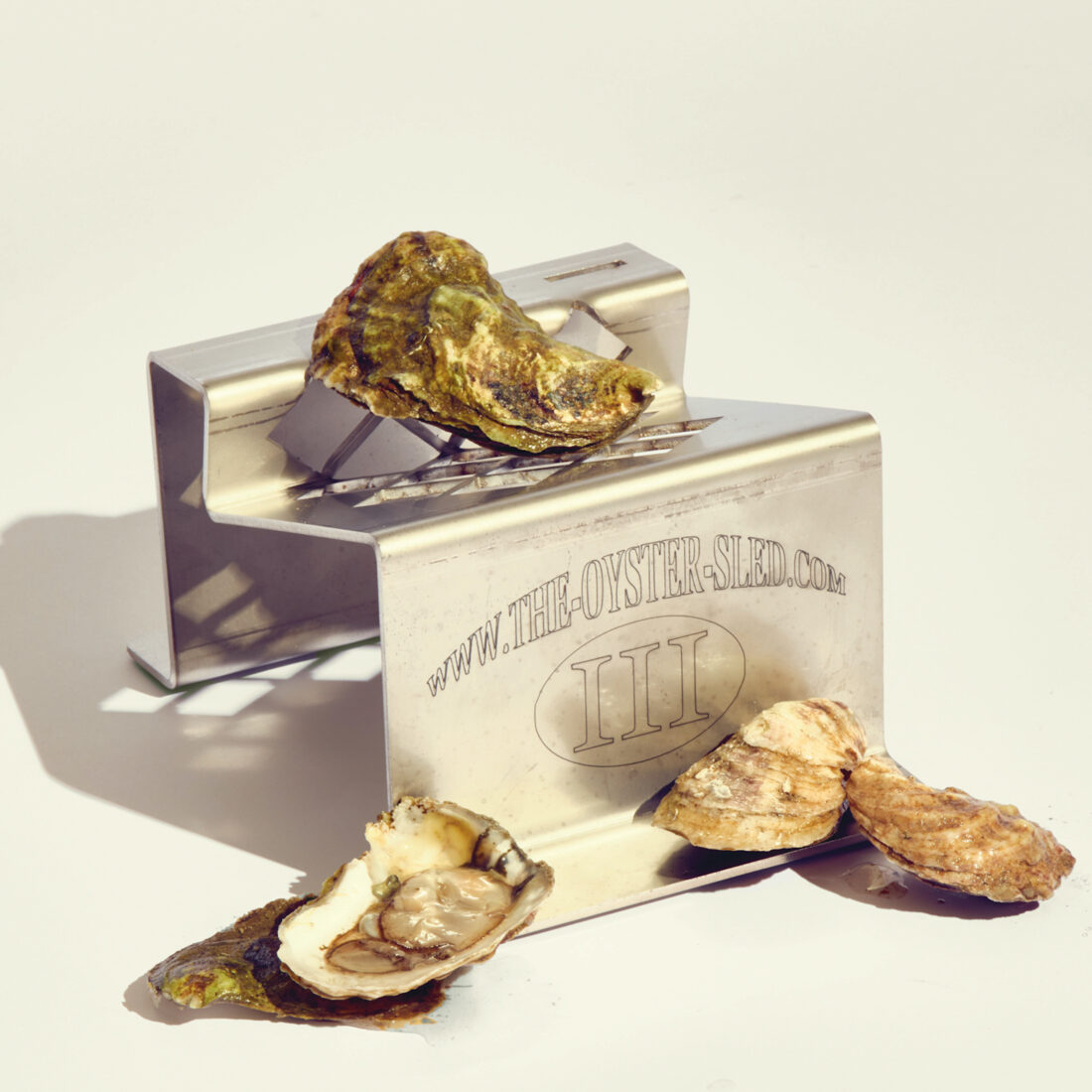
Photo: Fredrik Brodén
When Earl Geoghegan was a kid in the late 1960s, his father, Ace, liked to drink beer and play cards with his pals and counted on his young son to shuck oysters for the adults. One day, Geoghegan was falling behind, his hands raw and nicked, when his father asked him why he couldn’t keep up. “First of all,” he told his dad, “I’m only twelve.” The following week, his father, a shipyard welder, brought home a makeshift oyster-cradling device he’d cobbled together from a piece of pipe and metal grating. “Man, I was on fire then,” Geoghegan says. “I told my dad to let me get a dozen open before his friends started eating, and they’d never catch me.” Today Geoghegan’s Oyster Sled is a modern version of his dad’s homegrown contraption. Built in his hometown of Baton Rouge of laser-cut, food-grade stainless steel, the device holds an oyster snugly so you can shuck without fear of the knife stabbing your hand or the shell gashing your palm, and even has a handy slot in which to store the blade when you’re done.
Outdoors Runner-Up: Marine Bean
Boat Beanbag Chair
Wilmington, North Carolina | $240; themarinebean.com
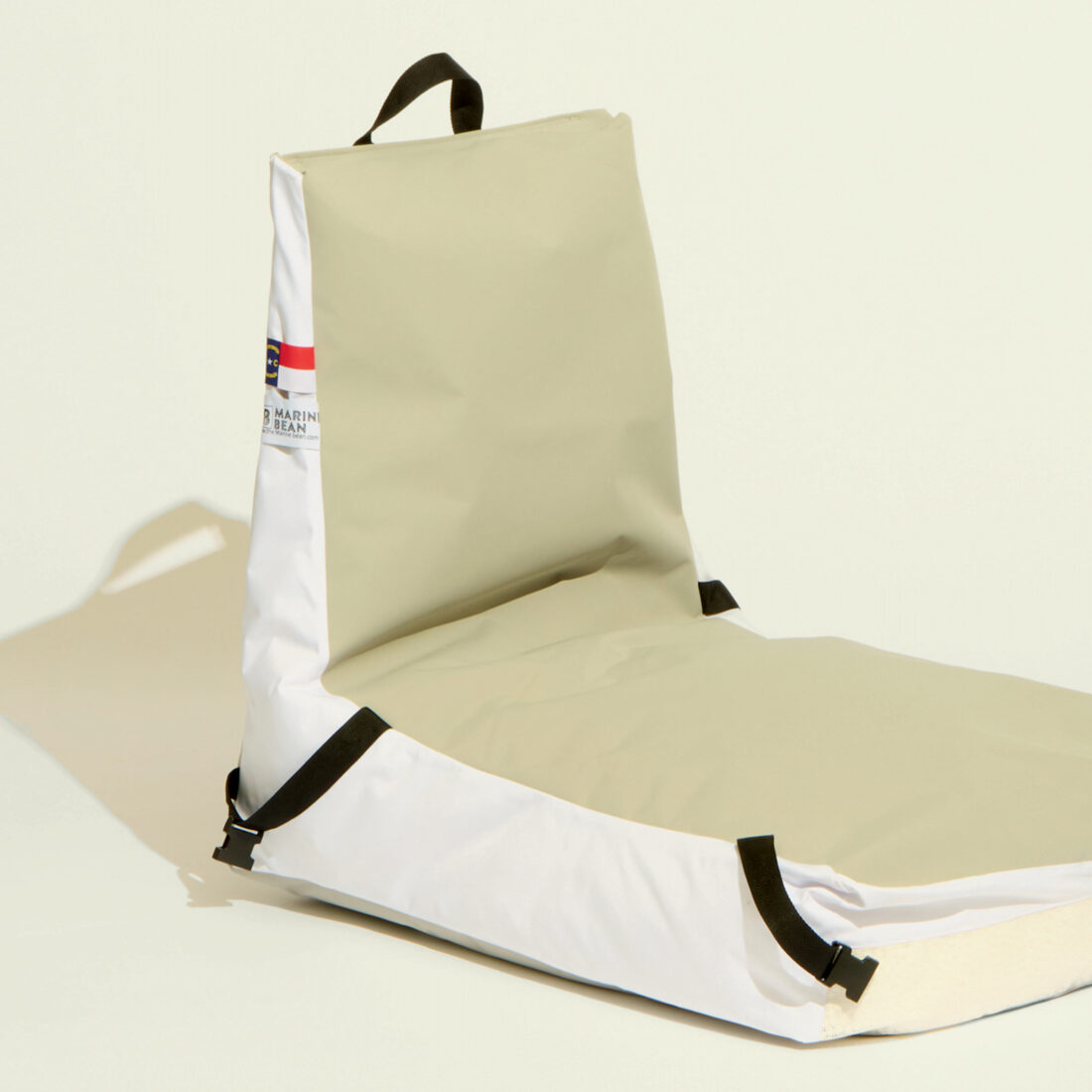
Photo: Fredrik Brodén
Like most great ideas, the concept of the Marine Bean came as the answer to a problem (albeit a champagne problem). In 2021, as Dale and Chris Lacy crossed from Florida to the Bahamas in a friend’s boat, they found themselves kicking back in very uncomfortable beanbag chairs. “All the beans scooched out from under my butt,” Dale recalls with a laugh. “That was no good, and I thought: There had to be a better way.” Working with their son, Sean, the couple crafted the Marine Bean from U.S.-sourced SunMaster fade-resistant material and filled it with polystyrene beads, all of which get treated with antimicrobial agents and sewn together in their facility housed in the old Coca-Cola bottling plant in downtown Wilmington. Shaped to fit a body’s contour, the chair goes perfectly on a boat, beach, pier, or pool deck, and is even designed to float a full-grown man holding a tallboy beer. Water drains out of the bottom mesh in seconds, and handy clips tether multiple Beans together so no one drifts away.
Meet the Outdoors Judge: T. Edward Nickens
Raleigh, North Carolina

Illustration: Jaya Nicely
Over his fifteen years of judging the Outdoors category, T. Edward Nickens has sought products with a connection to place and a direct line from heritage to innovation. Out of the many products putting fresh twists on older Southern traditions, the Keown Fine Folders Trapper was a cut above the rest. “While many custom knives are for display and show, I think the finest pieces from a knife maker should be put to work,” Nickens says. “A knife isn’t a statue.”
Crafts Winner: Andrea Condara LLC
Christmas Tree Toppers
Made in: Houston, Texas | $285–$695; andreacondara.com

Photo: Fredrik Brodén
Eclectic evergreen toppers bring the holiday whimsy
By Lindsey Liles
An artist with an eye for unconventional home decor, Andrea Condara has created larger-than-life plaster floral wall installations, hand-painted lantern chandeliers, and a cheerful yellow mural that frames a doorway in a Round Top, Texas, hotel—but holiday decorations are especially close to her heart. “I love that you go on this treasure hunt for your Christmas stuff that only comes out once a year and you get to really, really enjoy it,” Condara says. One of her favorite treasures: showstopping one-of-a-kind tree toppers. Inspired by antique Italian and French mirrors, Condara created a bespoke, whimsical topper a few years ago using lightweight, recycled materials. Word of mouth prompted new orders, the toppers exploded in popularity, and Condara designed more and more iterations. “I cut cardboard boxes into pieces and glue them together, add aluminum foil, and then coat everything with a plaster, papier-mâché material.” Sometimes, a little mirror goes in the middle to add twinkle. After a few layers of plaster, she paints the star, applies gold and silver leaf, and adds an antique finish. “I use one as a topper on my own tree, but I actually put a whole bunch of smaller ones among all the other special ornaments I’ve collected over the years,” she says. “I see Christmas as a time to make design choices that are over the top and exuberant.”
Crafts Runner-Up: Unityware Ceramics
Box Turtle Butter Dish
Elkins, Arkansas | From $149; unitywareceramics.com

Photo: Fredrik Brodén
As a child near Fort Smith, Arkansas, Abby Snyder loved exploring and catching turtles—so much so that when she started sculpting during the pandemic, she tried her hand at making a trinket box in the shape of an eastern box turtle. With the encouragement of a local shop owner, the box evolved into a butter dish, alongside a host of other pieces inspired by nature, such as a tortoise-and-hare teapot, a crow pitcher, and a pumpkin tureen. “I come from a line of pragmatic women,” she says, “and function gives value.” Snyder starts by shaping the dome of the shell and the plastron below to hold the butter, then uses a needle tool to add texture. After the reptile has spent twelve hours in the kiln, Snyder glazes it—often she’ll look at pictures of turtles she’s caught around her house, and occasionally, she’ll add a notch to the shell in a nod to researchers who use that method to mark turtles they’re studying and conserving. A final firing completes the design. “I love the idea of an everyday object being a conversation piece,” Snyder says.
Crafts Runner-Up: Kamiya Furniture
Chair #61
High Point, North Carolina | From $1,800; kamiyafurniture.com

Photo: Fredrik Brodén
For Jeremy Kamiya, a piece of furniture is a study in form and proportion. In 2014, inspired by furniture-scouting trips to his wife’s home country of Indonesia, he started leveraging his graphic design background into working with his hands, shaping wood into first a side table, and later desks, dining tables, and custom pieces—all without any screws or nails. “I love to piece together the wood-on-wood connections to build something that will last for generations, and watch it all slide together like a puzzle,” he says. Take the forty-hour process to make his three-legged Chair #61: Kamiya starts with rough-cut walnut, squaring the boards before cutting out the shapes of the legs, seat, and back. Then he turns to the joinery. A chisel drills out square holes, or mortises, and brass wedges and pins slide in to hold the chair together. Last comes a lot of sanding and oil and wax (never any stain) to finish the look. “I want to make things that are humble, but special to people,” Kamiya says. “We can have a little reverence for our utilitarian objects.”
Crafts Runner-Up: Blue Ridge Blankets
Blankets
Asheville, North Carolina | $595; localcloth.org
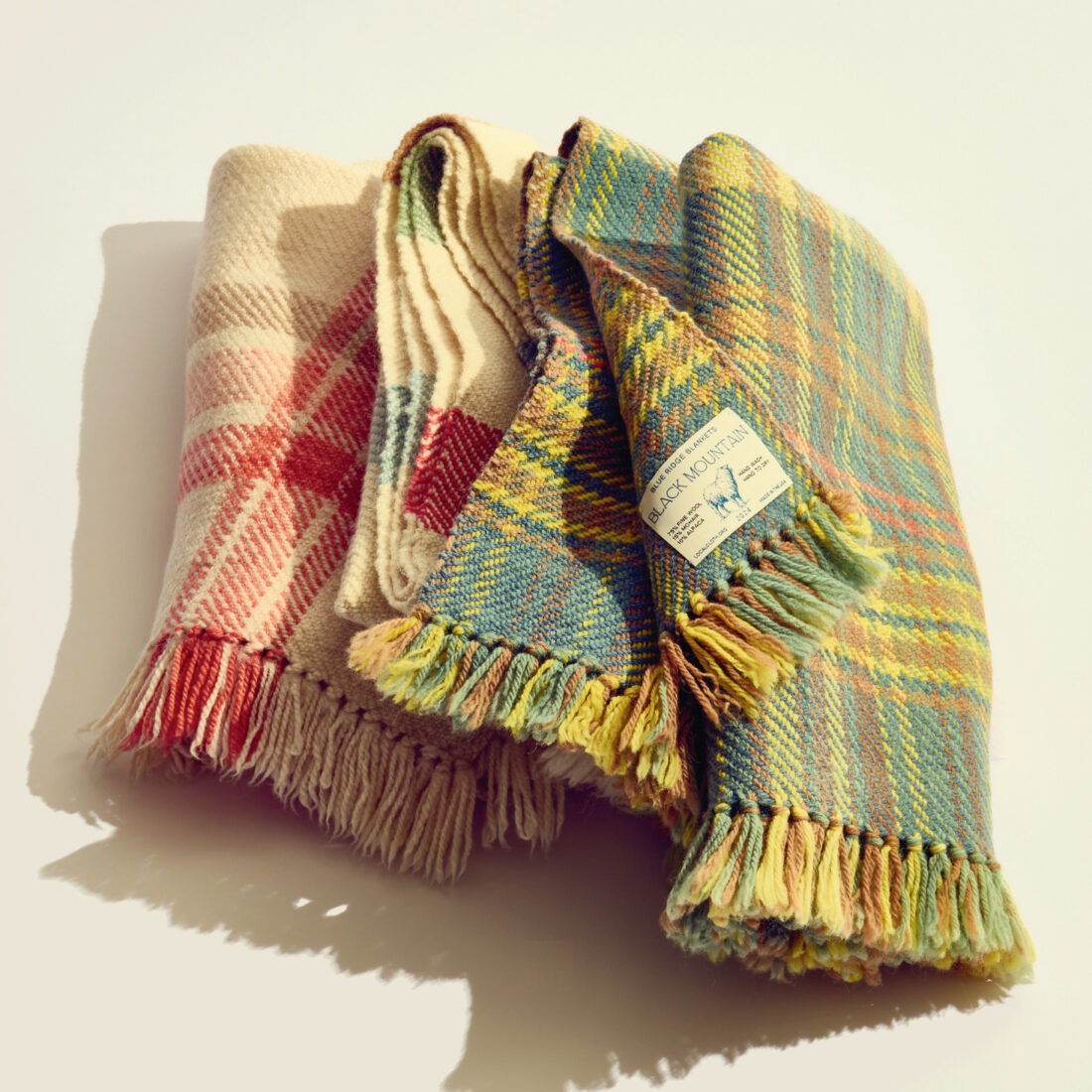
Photo: Fredrik Brodén
“Every blanket tells the story of the many hands that touched it,” says Caroline Williford, project manager of the Asheville non-profit Local Cloth’s Blue Ridge Blankets Project, which launched in 2021 as a way to revitalize the fiber economy of Western North Carolina. The journey begins when twenty nearby farms shear their sheep, alpacas, or Angora goats and send the cleaned fleece to a mill for washing, carding, and spinning. The resulting yarn then travels to Melanie Wilder, head of the fiber program at Warren Wilson College in Swannanoa, who dyes it with the likes of indigo, madder root, weld, and walnut, and, with the help of her students, weaves it into blankets, naming each design for a local mountain, river, or town. Local Cloth sells the one-of-a-kind blankets in batches once or twice a year. The most recent release was especially meaningful: After Hurricane Helene flooded the studio with eleven feet of water, the team salvaged as many blankets as they could from the mud, restoring and selling them to a warm reception from the community.
Meet the Crafts Judge: Blake Sams
Charleston, South Carolina, and New York, New York

Illustration: Jaya Nicely
Through his company, Gregory Blake Sams Events, and Wentworth, his home goods shop in downtown Charleston, Blake Sams has hosted countless soirees and sourced timeless pieces, honing a keen eye for design that immediately drew him to Andrea Condara’s Christmas tree toppers. “I really haven’t seen other iterations in this format on the market,” he says. “I think these pieces can stand alone and do not necessarily have to match a ‘themed tree.’ The possibilities are endless.”
Food Winner: Condor Chocolates
Honeycomb Toffee
Made in: Athens, Georgia | $10; condorchocolates.com
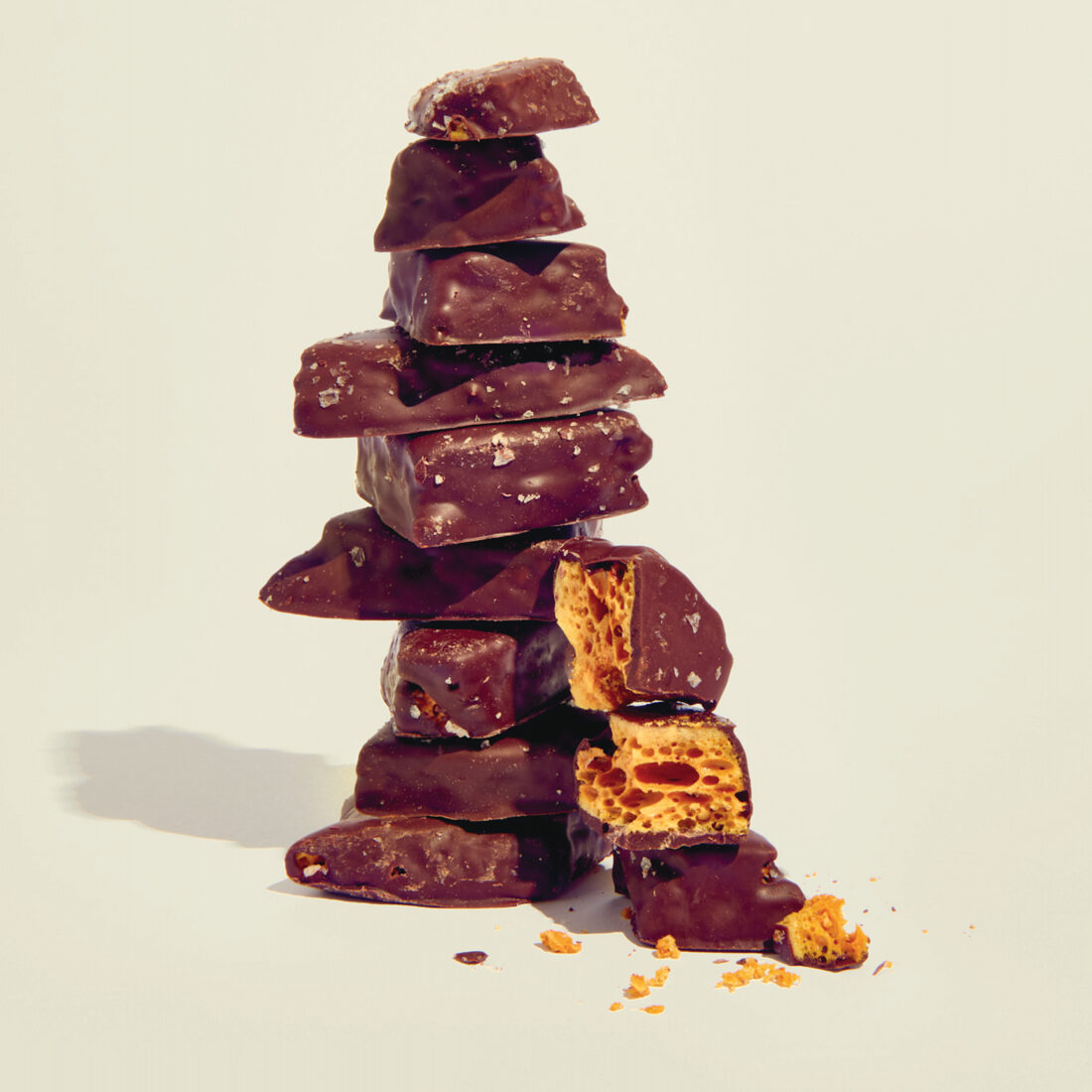
Photo: Fredrik Brodén
A chocolate treat spans continents and family connections
By Wayne Curtis
Peter Dale had fond childhood memories of visiting Ecuador, where his mother grew up, and of the distinctive flavor of its chocolate compared with American candy bars. So just over a decade ago, when he and his brother, Nick—both University of Georgia graduates with backgrounds in restaurants and agriculture, respectively—started kicking around business ideas, chocolate immediately came to mind. They started experimenting in Nick’s kitchen. “It was very DIY,” Peter remembers. “Eventually we had a product we really liked, and then we found a space in Athens near the college.” There, they began making chocolate bars from imported Ecuadorean cacao beans. “Then folks were like, Can you make truffles? So we started making truffles. And then, Can you make brownies? And Can I get a cup of coffee with my brownie? It just sort of snowballed.” Before long, they were operating a full-blown dessert café. Among their popular offerings: a chocolate-covered honeycomb toffee, inspired by English treats. The indulgent toffee gets made with Georgia honey, using a method that renders it airy and crisp. (“You know when toffee gets stuck to the back of your teeth? We never want that to happen,” Peter says.) In their Classic City workshop, the team breaks the toffee by hand, before covering it in 70 percent dark chocolate and finishing it with a touch of sea salt. The final product? It should probably be listed as a controlled substance.
Food Runner-Up: Anne’s of Charleston
Cheese Biscuits
Charleston, South Carolina | $20 for about 30 biscuits; annescharlestoncheesebiscuits.com

Photo: Fredrik Brodén
“We never had a party without cheese biscuits,” says Anne Hutson, who learned to make the savory snacks from her mother, then tweaked the recipe as an adult to amp up the crunch and the spice. Her daughter, Sallie Hutson Price, joined her in the kitchen as a child. After Sallie graduated from Sewanee with a political science degree (“It made me a great salesperson,” she says), the duo decided to get serious. They applied for licenses and permits, designed creative packaging, and started selling online and in local markets in 2019. A few mentions in publications brought in a slew of orders, and after quickly outgrowing their home kitchen, the duo partnered with a century-old family bakery in Charleston to scale up and expand their range. The biscuits can now be found in Eastern Seaboard stores as far north as Virginia, and nationally online. One thing that hasn’t changed? The addictive flavor. “We always wanted people to want another one,” Hutson says. “Just one more.”
Food Runner-Up: Mar Mar
Chili Garlic Crunch
Richmond, Virginia | From $12; ilovemarmar.com

Photo: Fredrik Brodén
With three athletic children, Liza Lazaro-Matz and her husband, Michael, spent years as regulars at middle- and high-school sporting events throughout Virginia. As she worked the tailgate circuit, she brought along her homemade chili-garlic crisp, and folks clamored for her to sell it. Now that her children have grown, she does. To start, the couple gave away 1,400 samples at an industry event, and within days, 250 preorders flooded in. “We knew we were onto something,” she says. Since then the business has grown wildly. Much of Mar Mar’s success stems from the crisp’s versatility, which Lazaro-Matz attributes to her eclectic heritage (the daughter of Filipino parents, she grew up in West Virginia before marrying into an Italian American family). “It’s a lot more crunch than oil,” she says,“and you can use it in so many different ways.” Mix it with butter and put it on shrimp, add it to ranch dressing, stir it into ramen, use it on pizza. “We don’t want to be relegated to the international aisle,” Michael says. “We want to be next to the ketchup and mustard.”
Food Runner-Up: Pearson Farm
Peach Cobbler Kit
Fort Valley, Georgia | $34; pearsonfarm.com

Photo: Fredrik Brodén
The Pearson family planted the first peach tree on their land in Fort Valley, Georgia, in 1885. Five generations later, the farm now boasts some 250,000 peach trees spread across 1,500 verdant acres.“It’s a lot of peaches,” admits Lawton Pearson, who runs the farm with his wife, Lanier. “And over the last sixty years, almost everybody nearby seems to have gotten out of the peach business except us.” Peach season runs about twelve weeks, from late May to early August, but when it’s over, the demand remains. So Pearson Farm developed a cobbler kit that anyone could bake at home year-round, with a hefty jar of peach filling made of peak-season fruit and an easy-to-make cobbler mix created in conjunction with Lauren Bolden at Pie Bar, a venerated Atlanta-area dessert shop known for its sweet and savory pies alike. The secret ingredient isn’t so secret: It’s the fruit. “A lot of cobbler kits are just mushy filling,” Lanier says. “We wanted large chunks of peaches. And they have to be the best peaches we grow, picked at the perfect time.”
Meet the Food Judge: Meherwan Irani
Asheville, North Carolina

Illustration: Jaya Nicely
Since opening Chai Pani in 2009, Meherwan Irani has earned five James Beard Award nominations, with a win in 2022 for Outstanding Restaurant, and launched two outposts and additional concepts such as his spice company, Spicewalla. When judging this year’s entries, Irani sought unique flavors, stories, and surprises, and found all three in Condor Chocolates. “The crunch of the honeycomb toffee is so delightfully unexpected,” he says. “Given that I finished the bag in one sitting, I haven’t figured out what else to use them for besides blissfully indulging.”
Drink Winner: Dancing Fox Distilling Company
Safai Bourbon
Made in: Newport, Kentucky | $300; safaibourbon.com
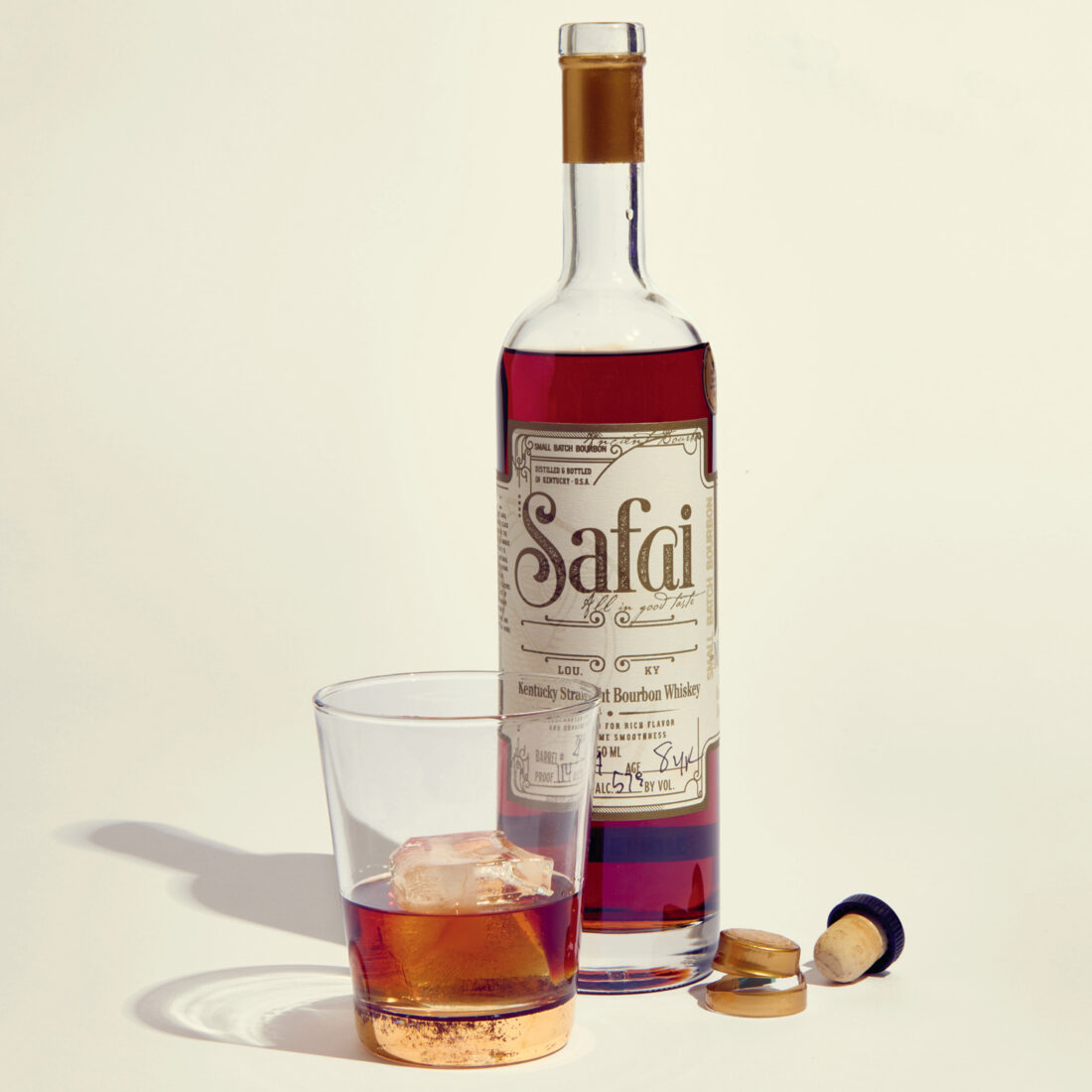
Photo: Fredrik Brodén
An entrepreneur’s inventive bourbon is meant to be savored
By Wayne Curtis
Serial entrepreneur Mike Safai is a supertaster—he has an actual, diagnosable condition that heightens his ability to detect flavors and aromas that others can’t. “It’s sort of a curse,” he says. “I can walk into a house and smell the garbage in the backyard.” (His father and his son have a similar affliction.) Happily, he’s put his superpower to excellent use. He launched the Safai Coffee Company when he couldn’t find his ideal cup of joe near his home in Louisville. In his basement, he’s undertaken various other adventures in flavor, including home brewing. His father, who was a winemaker in Iran when Safai was a child, had a small, candle-powered still he used to make thimblefuls of brandy from his wine, and Safai thought: why not? Whiskey is, at heart, distilled beer, so into the still his basement brew went. When he served a sip to a friend, he heard the words that have launched countless empires: “Dude, you have to sell this.” He honed his mash bill to one employing 70 percent corn, 15 percent wheat, 5 percent brewer’s malt, and—as a novelty—10 percent honey-roasted malted barley. He’s since graduated from the basement; today he makes his whiskey in partnership with New Riff Distilling in northern Kentucky, ages it eight years, then releases barrel by barrel. Safai says he has about fifty more barrels of this particular recipe remaining (each yields about 150 bottles), and these will trickle into the market slowly. The good news: New Riff is making more. The bad news: It won’t be ready for eight years.
Drink Runner-Up: Slater Run Vineyards
Pétillant Naturel Sparkling Rosé
Upperville, Virginia | $38; slaterrun.com
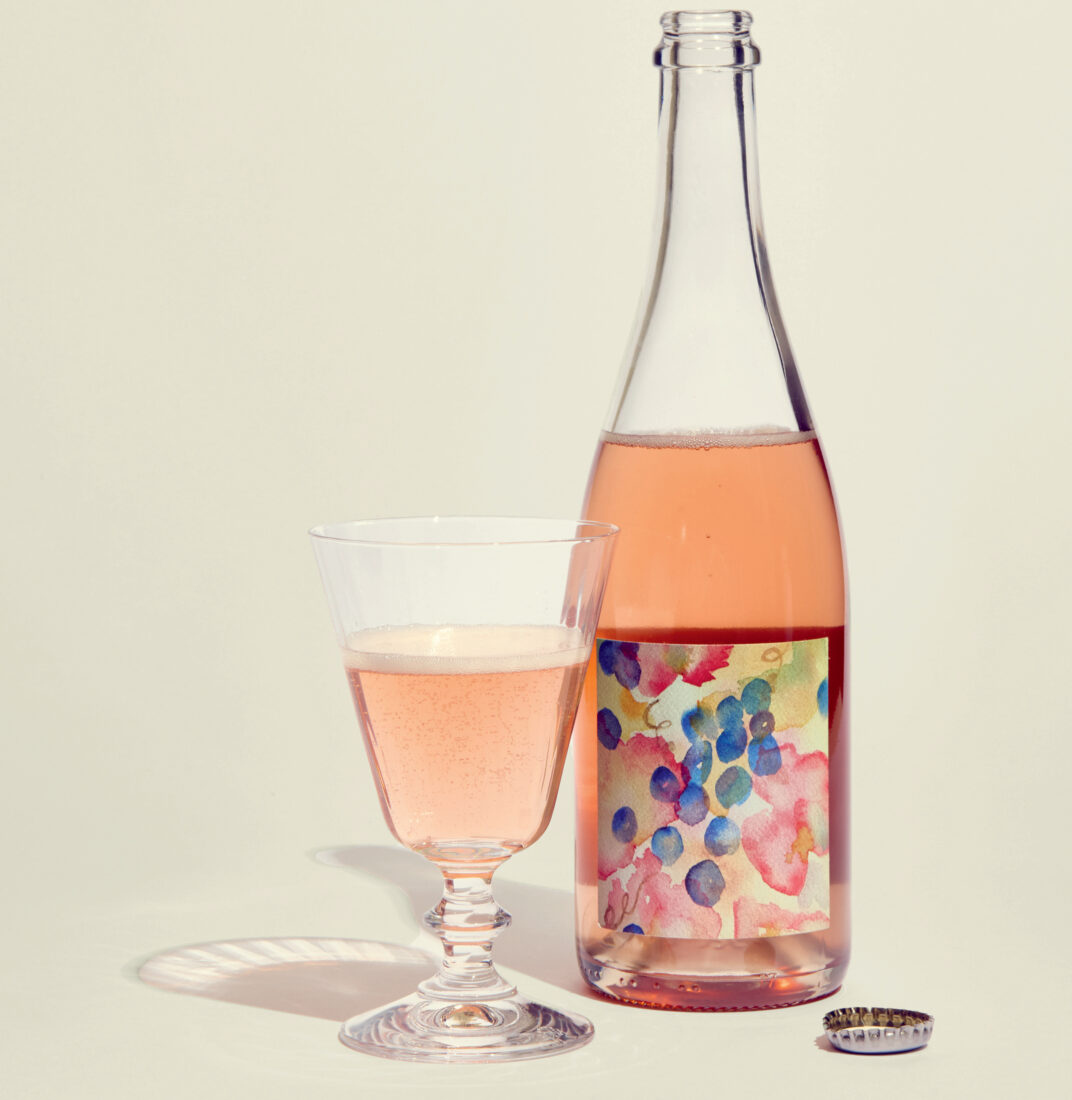
Photo: Fredrik Brodén
Three generations of Slaters live on the 320 acres of Slater Run Vineyards, farmland that’s been in their family for three centuries. The spread functioned chiefly as a cereal grain and cattle farm, but in 2010, the younger folks decided to plant vines and create a winery. “We had a vision of Falcon Crest,” says Kiernan Slater Patusky of the 1980s Napa Valley soap opera, “but it’s farming. It’s not glamorous at all.” Working with French winemaker Katell Griaud, whose family runs a winery in Bergerac, France, they planted vines suited to Virginia’s soil and climate and started producing old-world-style vintages. Around seven years ago, Slater Run launched a bright and bubbly pét-nat sparkling rosé, a blend of cabernet franc, cabernet sauvignon, and merlot. Though you can purchase bottles online, the Slaters still sell primarily on-site—allowing customers to actually see rather than just hear about their approach, which has nothing to do with quarterly earnings. “Our aim has always been to see the long game,” Patusky says. “The vineyard is literally in our backyard.”
Drink Runner-Up: Louie Louie
Blackberry Lemon THC Seltzer
New Orleans, Louisiana | $30 for six; drinklouielouie.com
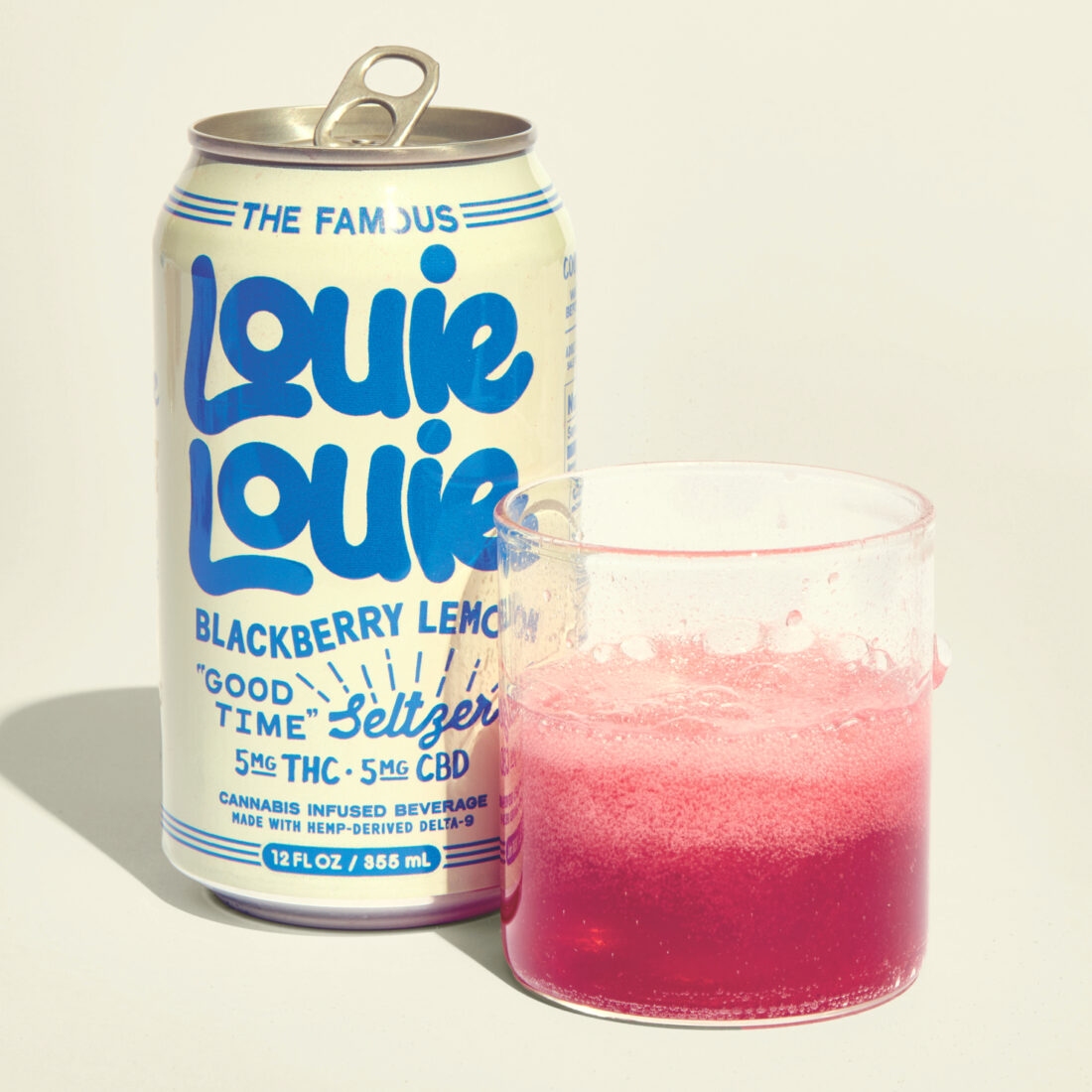
Photo: Fredrik Brodén
A regulatory lawyer and a beverage director walked into a bar. No, seriously. The lawyer, Eric Becker, and his wife, Michelle Terrebonne Becker, saw an opportunity to work through a maze of thorny regulations to produce a legal beverage that contained Delta-9, a variation of the active ingredient in cannabis. The beverage guy, Ken Jackson, with his wife, Marie La France, saw a chance to capture New Orleans’ vibrant flavors. The result: Louie Louie, which the couples launched in 2023. Coming up with the flavors fell to Jackson, who had been an original partner and beverage director at the esteemed New Orleans restaurant Herbsaint. “Typically I look backwards for ideas,” he says. The notion for the blackberry lemon flavor came from childhood summers eating blackberries straight from the bush, plus inspiration from Herbsaint’s anise-studded Champagne cocktail. With five milligrams of THC and five milligrams of CBD, the drink appeals to those looking for an alcohol alternative—and something sippable to boot.
Drink Runner-Up: Distillery of Modern Art
Nouveau Gin
Chamblee, Georgia | $35; distilleryofmodernart.com
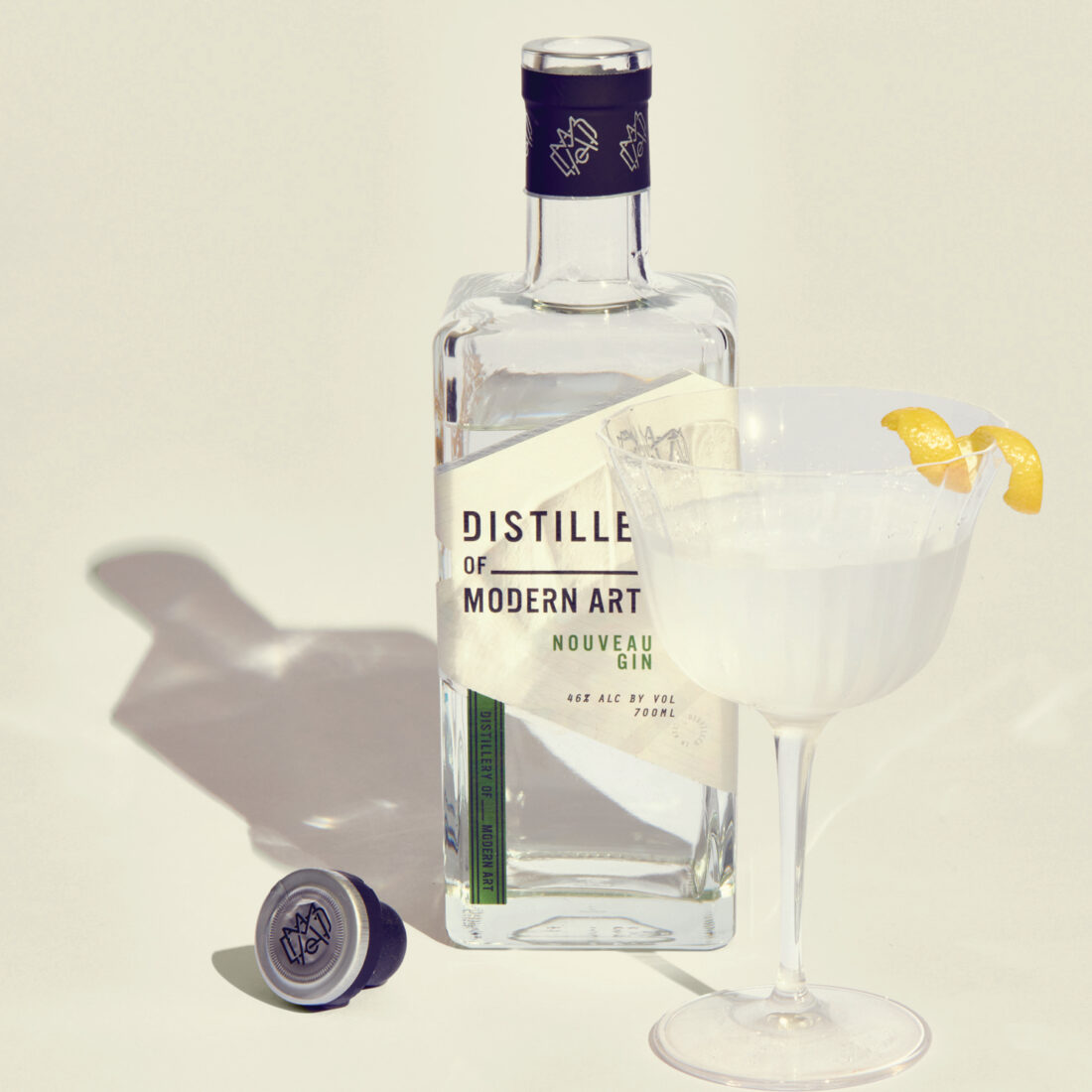
Photo: Fredrik Brodén
“If someone tells me they’re not a gin person,” says Distillery of Modern Art founder Seth Watson, “I tell them, ‘You just haven’t had the right gin yet.’” He could then direct them to the ethereal version he and his team have been cooking up for the past three years at his distillery, art gallery, and event space just northeast of Atlanta. “It’s made in a London dry style, but it’s not a classic London dry,” says head distiller Matt Greif. The process begins with macerating the botanicals—including coriander, juniper, orris root, angelica root, lemon and orange peel, cassia, and Szechuan peppercorns—and then distilling the mix while tuning in to the flavors that emerge from the still. The art comes in capturing the most desirable notes while letting unwelcome ones escape. The first sip of the beguiling blend is bright with juniper and coriander, before coming to earth with cinnamon and the electric tang of Szechuan pepper. Gin distillation days are Greif’s favorites, because, he says, “every time you walk up to the still and have a smell or a taste, it’s different.”
Meet the Drink Judge: Chris Hannah
New Orleans, Louisiana

Illustration: Jaya Nicely
A two-time James Beard Award winner for Outstanding Bar (first at Arnaud’s French 75 Bar, then Jewel of the South), Chris Hannah enjoyed sampling the new trends percolating in this year’s drink industry—but particularly reveled in the winning Dancing Fox Distilling Company’s Safai bourbon. “It drank easily to its proof, and kept its finesse over ice, which was of most importance,” Hannah says. “I’d use it in an Improved Whiskey Cocktail, a Night Tripper, and a Fox and Hounds, if you have the gall.”
The Sustainability Award: Laurel Ridge Studios
Brooms
Wytheville, Virginia | $8–$200; laurelridgestudio.com
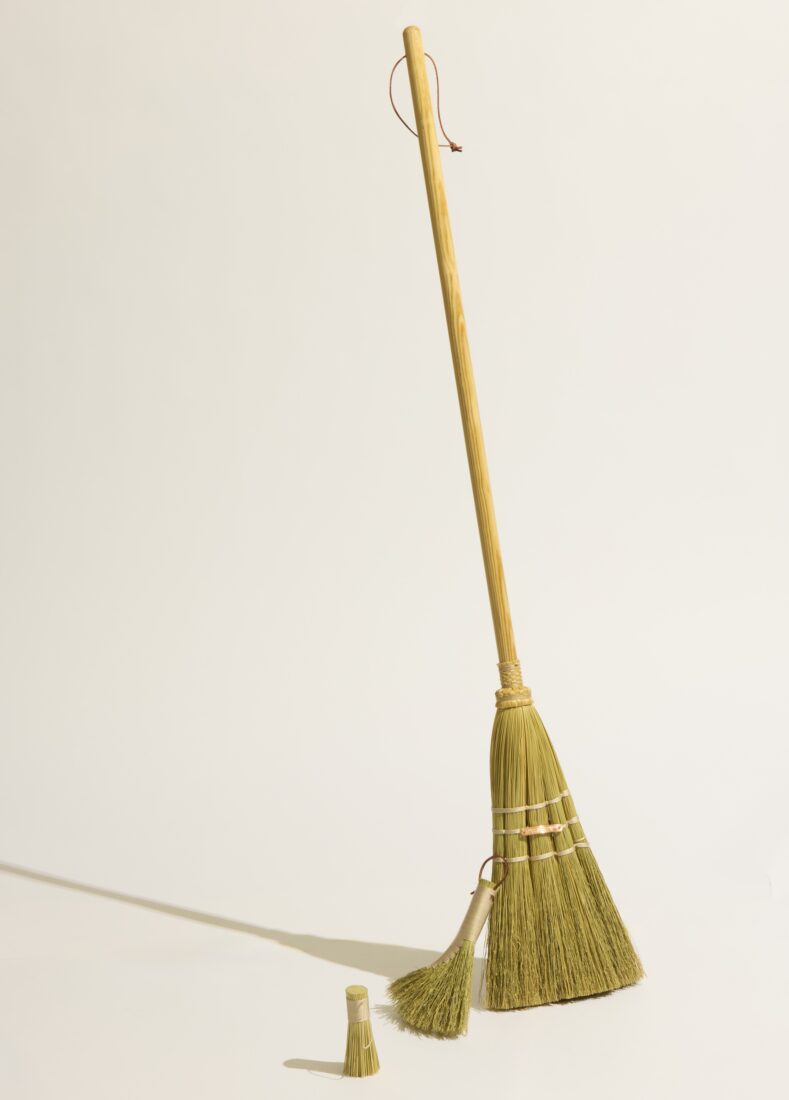
Photo: Fredrik Brodén
Although broom making has been an Appalachian tradition for centuries, broomcorn was scarce when Erin Simons began producing her Laurel Ridge Studios sweepers, whisk brooms, and rustic cobwebbers in 2022. So last year, she partnered with the Jackson/Umberger Homestead Museum in her hometown of Wytheville, Virginia, to reintroduce the sorghum as a heritage crop and educational exhibit. Handles come from hand-harvested maple, oak, or walnut, or even repurposed croquet mallets, musical instruments, or beer taps.“They’re not just an art to be looked at,” Simons says. “They’re made to be used for years.”






